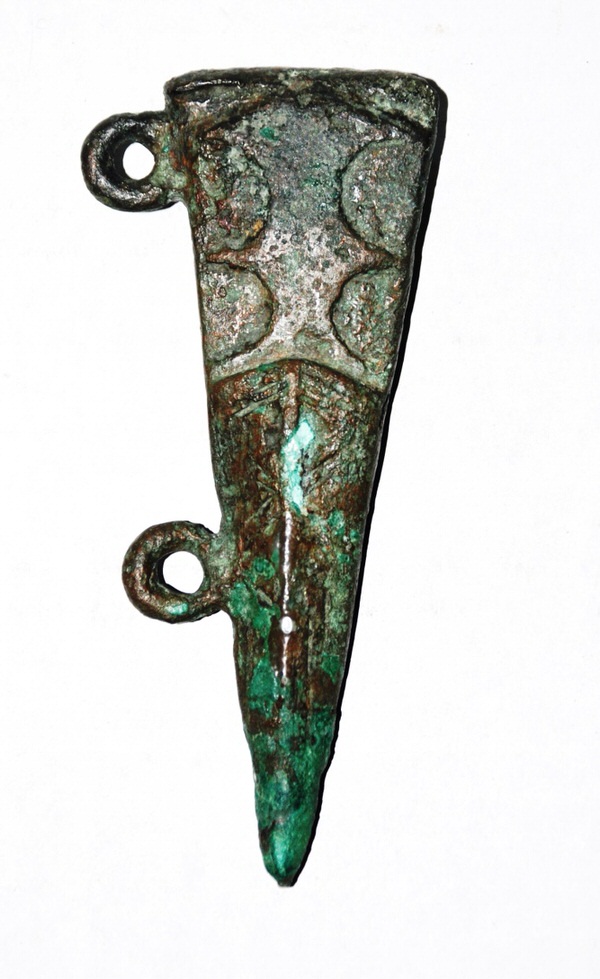Votive quiver
The nineteenth century digs in the Tharros necropolises caused the dispersion of Phoenician tomb funeral collections belonging to the first phase of contacts between the Phoenicians and the local community, when the new arrivals lived peacefully with the locals.
The plundered items became a part of private and public collections, but are important in showing us the phenomenon mentioned above, i.e the integration of the two different populations. The bronze quiver (figs. 1-2) made in the late Nuragic age, between the 8th and 7th century B.C., is actually a miniature copy of a double sheath.


On one side, the sheath contained a small dagger, on the other it held three stilettos with moveable heads. These were an offensive weapon to be used at close distance: the thrower held the head that the stiletto was placed inside and threw it, giving it a greater force.
The miniature “quivers”, which were some kind of good luck charm, were widespread on the island (figs. 3-4) and also in Etruria, where the late-Nuragic people had close relations.
Items of this kind have been found life size in Phoenician tombs from the 7th century B.C. in Bithia (Domusdemaria) and Othoca; the leather sheath has decomposed, but the dagger and stilettos were found on the chest of the deceased.


Bibliografia
- P. BARTOLONI, La necropoli di Bitia – I, Roma 1996.
- L. DERIU, Le “faretrine” nuragiche. Contributo allo studio delle rotte fra Sardegna ed Etruria, in A. MASTINO ET ALII (edd.), Navis plenis velis euntes, Roma 2009, pp. 136-177.
- G. NIEDDU, R. ZUCCA, Othoca. Una città sulla laguna, Oristano 1991.
- R. ZUCCA, Bronzi nuragici da Tharros, in La Sardegna nel Mediterraneo tra il secondo e il primo millennio a.C., Cagliari 1986, pp. 117-132.

 VR
VR